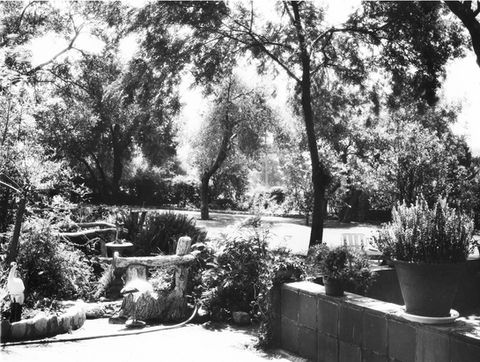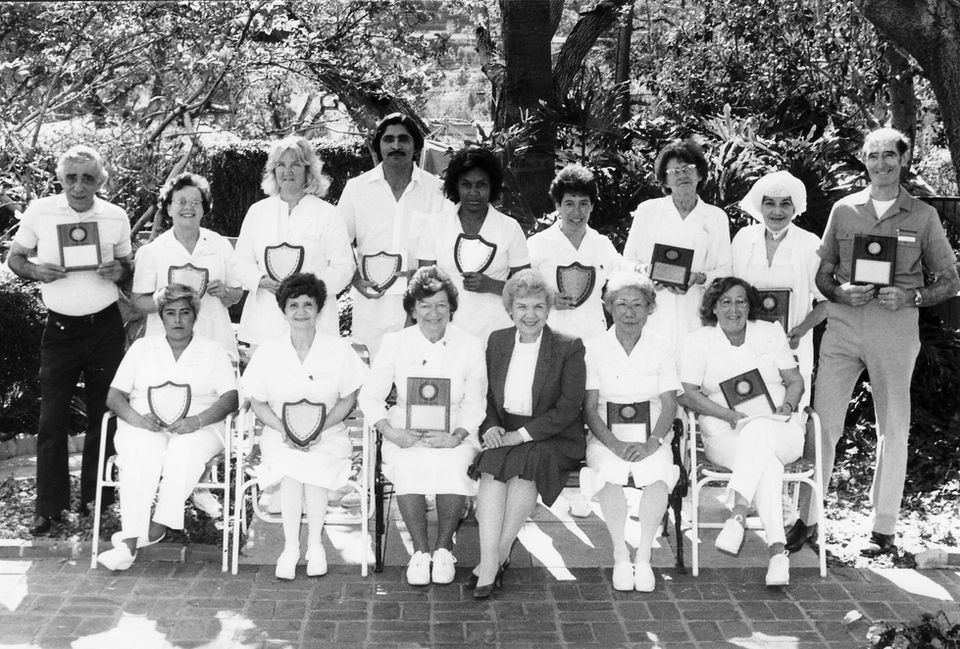
ROCKHAVEN'S HISTORY
ROCKHAVEN SANITARIUM, AMERICA'S FIRST FEMINIST ASYLUM
The Feminist Asylum
On a shaded lot in a quiet residential enclave in the La Crescenta valley sits a collection of Spanish Colonial buildings and Craftsman cottages. These days, the only people who set foot on the Glendale, California property are the Friends of Rockhaven volunteers, who tend the peacefully empty grounds and buildings, and the groups of visitors who come through on guided tours. But for much of the 20th century, the property was home to the Rockhaven Sanitarium—a feminist institution for mentally ill women. Rockhaven was conceived as an antidote to the prison-like atmospheres of the asylums of the time, where women patients were often imprisoned indefinitely and sometimes abused.
The Crescenta Valley was founded in the late 1800s on the sanitarium industry, mainly for the treatment of tuberculosis and other lung diseases. But by 1923 when Rockhaven was founded, private sanitariums for mental illness were popping up locally. Generally, these private sanitariums were high-end establishments, with quality food and care, but with little official oversight.
Patients at the state-run asylums of the time generally fared far worse—and the growing fascination with eugenics meant that some of them were also forcibly sterilized.
Rockhaven was different. It was founded in 1923 by the nurse Agnes Richards, who had spent much of her career working in asylums in California and the Midwest. Determined to create a kinder, gentler alternative to the abuses she had witnessed, Richards used a thousand dollars she’d saved to purchase a small rock cottage on a lush, tree-lined lot in an area that was then called Verdugo City. Within a year, Richards had 24 “ladies”—never called “patients”—and was expanding the facility rapidly.
“A place like Rockhaven—one run by and for women—was especially significant at a time when new and dangerous ideas about women’s sanity were taking hold.” —April Wolfe (writer and filmmaker based in Los Angeles)
Richards ran Rockhaven until 1967 when she passed it on to her granddaughter Patricia Traviss. In Traviss' time, Rockhaven changed with the needs of its residents and became popular for the care of elderly women with dementia. She continued the fine care that her grandmother had initiated. The ladies were treated with dignity and respect.
In 2001 Traviss was ready to retire, and sold Rockhaven to a large hospital corporation. However, by 2006 they found the upkeep too costly and sold it to developers who planned to demolish Rockhaven and build condos. The community stepped in to stop the demolition and the City of Glendale purchased Rockhaven with the intent to open the property to the public for use as a community park.
However, because of the downturn of the economy in the years since the purchase, the City of Glendale has allocated few funds to rehabilitate or open Rockhaven, and the property sits empty, and most tragic of all, decaying.
"Today, Rockhaven is on a list of surplus property, and the danger of losing this remarkable landmark and charming facility is very real. It is a public property, a public park…but the gates are closed. It looms, ghost-like, just out of view." — Corina Roberts (Founder of Redbird, a non-profit Native American and environmental association)
Rockhaven Sanitarium exists as a monument to positive changes in the treatment of mental illness. It is also an important link to women’s history. It was established by a strong woman only three years after women were granted the right to vote, and throughout most of its time, it was run by women, for women. As well, in a community whose founding industry was sanitariums, it remains as the last intact example of one of these facilities. It has the potential to be an educational tool for future generations, as well as a community center and park. Rockhaven Sanitarium has a beautiful story, one of caring and incipient equality for women and those with mental illness. It deserves to exist, and to be celebrated.
We Need Your Support Today!
























